| Introduktion
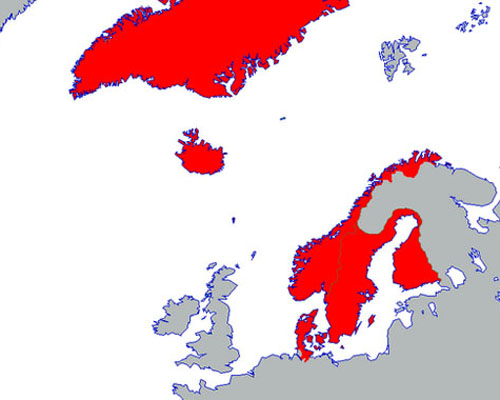
| | I 1400-tallet var Norden forenet under et fælles kongedømme i Kalmarunionen. Modstridende interesser i en sådan central styring gav dog anledning til stridigheder, og i 1523 brød unionen definitivt sammen.
Men for købstæderne i Øresundsregionen var det en fremgangsperiode, og inden for kirke, kloster og adel, fandt der fandt omfattende byggerier sted. |
Perioden er præget af fornyet ekspansion, øget vækst i handelen og bysamfundene og en stadig mere aktiv medvirken fra kongemagtens side. Konge og adel regerede i samråd og i Øresundsregionen blev kongemagten initiativtager til byudvikling og forsøg på frigørelse fra den massive nordtyske påvirkning.
Norden var forenet i en personalunion, Kalmarunionen, men kongens hansafjendtlige politik skabte uro i Mellemsverige, der førte til det såkaldte Engelbrechtoprør, som nåede helt ned til grænsen mod Skåne.
I anden halvdel af århundredet blev åndslivet påvirket af reformkatolske og humanistiske strømninger. Den kulturelle påvirkning orienterede sig nu også imod de nederlandske områder, hvor renæssancens menneske- og virkelighedsopfattelse begyndte at gøre sig gældende.
Det er også i 1400-tallet at munkeordenen karmeliterne, med kongens hjælp, vandt indpas i landet. I Øresundsregionen ser man det i Landskrona og Helsingør, hvor det imponerende klosterbyggeri, Vor Frues Kloster, i Helsingør endnu kan beskues.
Adelens borgbyggeri udviklede sig efterhånden fra middelalderens forsvarsfunktion til slotslignende pragtboliger for disse magtens mænd.
I forbindelse med byudviklingen dukker en voksende selvfølelse op hos håndværkerlaugene, der kræver lovbestemte privilegier.Købstædernes expansion
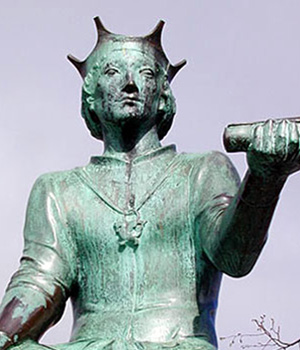
| | Under unionsregenterne Magrethe den 1. og Erik af Pommern påbegyndes en systematisk politik til ophjælpning af byerne og handelen.
Erik af Pommern fremmer købstadslovgivningen, giver købstadsrettigheder til en række byer i Øresundsregionen, grundlægger Landskrona i 1413, og indfører Øresundstolden i 1429. |
Kalmarunionen og købstædernes vækst
I slutningen af 1300-tallet er Skånemarkedets betydning vigende og handelen flytter bort fra Skanør og Falsterbo til bl.a. Malmø og København, der nu kunne byde på et større opland og mere købedygtigt publikum. Hen imod slutningen af århundredet manifesterer Norden under Kalmarunionen (1397) med Margrethe d.1. i spidsen modstand imod hansestædernes økonomiske dominans og under Margrethes arving Erik af Pommern (1412-39) påbegyndes en systematisk politik til ophjælpning af byerne og handelen.

Kalmarunionen | 
Erik af Pommerens kroning |
Kongens initiativer
Erik af Pommern var fuldt ud klar over købstædernes og i særdeleshed Øresundsregionens betydning som det vigtigste gennemfartsfarvand imellem Østersøen og Nordsøen, hvilket fremgår af en række samtidige tiltag. Landskrona grundlægges i 1413, 1414 får Helsingborg købstadsrettigheder, i 1416 erhverver kongen København fra Roskildebispen og fra omkring 1419 befæstes Malmø med svære stenmure.
Med opløsningen af Skånemarkedet begynder hanseaterne at handle direkte med byerne og landbefolkningen, men fra 1422 forordnes det på Sjælland at hanseaterne kun må drive engroshandel, mens detaillehandel og håndværk skal overlades til byernes faste borgere. Adelen er dog undtaget fra disse regler.
Helsingørs købstadsrettigheder 1426
Helsingør har i tidlig middelalder formodentlig kun bestået af et mindre voldsted omkring Flynderborg med tilhørende overfartsmuligheder og måske fiskeri på forstranden. Kongemagten, i dette tilfælde Erik af Pommern, anlægger i begyndelse af 1400-tallet borgen Krogen og tilskynder til at flytte byen ud i nærheden af borgen.
Helsingør får købstadsrettigheder i 1426 i sammenhæng med opførelsen af Krogen og kulminationen på denne proces bliver indførelsen af Øresundstolden i 1429, som en slags erstatning for de tabte indtægterne fra Skånemarkedet. Henlæggelsen af opkrævningen til det smalle stræde imellem Helsingør og Helsingborg er logisk set i sammenhæng med ændringerne i skibstrafikken og handelsvejene.

Helsingør |
Helsingborg og Malmø
Helsingborg får købstadsrettigheder i 1414. Særlige bestemmelser heri omhandler salg af sild om efteråret og færgeoverfarten imellem Helsingborg og Sjælland. Helsingborg var med sin gode beliggenhed og stærke befæstning, der var et led i den tidlige middelalders række af kongelige forsvarsanlæg langs kysterne, oprindelig meget større end Helsingør, men med tiden bliver Helsingør på grund af tilknytningen til Øresundstolden og fjernhandelen, rigets tredjestørste by, næst efter København og Malmø. Malmø er en forholdsvis ny by og dens oprindelige navn Elbogen vidner om den hanseatiske indflydelse i området.

Helsingborg | 
Landskrona | 
Malmø | 
Helsingborg model 1400 |
Konkurrence mellem byerne
Stadig flere købstæder betyder også en stigende indbyrdes konkurrence. Omkring år 1500 må kong Hans(1481-1513) således mægle imellem en række byer. Efter en bestemmelse fra marts måned 1506 må borgerne i Lund og Væ på den ene side og Malmø på den anden ikke handle på hinandens torve og borgerne i Lund og Væ må kun handle med udenlandske købmand i Malmø på høstmarkedet.
Man fornemmer her kystbyernes stigende betydning, men disse har også indbyrdes kontroverser, som når det i september måned samme år bestemmes at borgerne i Lund, Helsingborg og Landskrona ikke må handle hos hinanden og at Lund og Helsingborg ikke må handle med udenlandske købmænd i Landskrona. Landskronas grundlæggelse sigtede på handel med Holland og England.
Helsingør-Helsingborg
Forholdet imellem Helsingør og Helsingborg er helt specielt idet de to byer fra 1541 får fælles torv, hvilket betyder at folk fra Helsingborg kunne sælge varer direkte på torvet i Helsingør. F.eks. havde 10 slagtere fra Helsingborg på et tidspunkt boder i Helsingør og fra Helsingør kom man ofte to gange om ugen over til Helsingborg for at handle kød og forarbejdede mejerivarer.
Forklaringen her er formodentlig, at tilgangen til animalske produkter var bedre i Skåne end i Nordsjælland. Helsingør må også fortsat importere korn langvejs fra og er i det hele taget atypisk med sit manglende opland og den specielle tilknytning til fjernhandelen.
Handel og konflikter
Udenlandske købmænd spiller fortsat en afgørende rolle i regionen. Rivalisering og kontroverser med hansestæderne fortsætter op igennem 1400 og starten af 1500-tallet med skiftende held og stigende konkurrence fra nederlænderne, der primært handlede med salt og klæde på Danzig og Riga. Et udtryk for ændringer i styrkeforholdet er det at hollænderne i 1490 under kong Hans opnår samme privilegier som hanseaterne.
Christian 2.(1513-23) fortsætter og udbygger Erik af Pommerns by- og handelspolitik ved at skærpe bestemmelserne omkring handelsret og forbyde handel udenom byområderne. Christian 2. bliver ligesom Erik af Pommern sat fra tronen, men især Malmøs borgere forblev hans trofaste støtter og han huskes for sit tætte forhold til både Malmø og Helsingør. Konger forgår, men visioner består, og den om Øresund som centrum og forbindelsesled imellem Nordsø og Østersø lever videre også i tiden fremover.Karmeliterklosteret
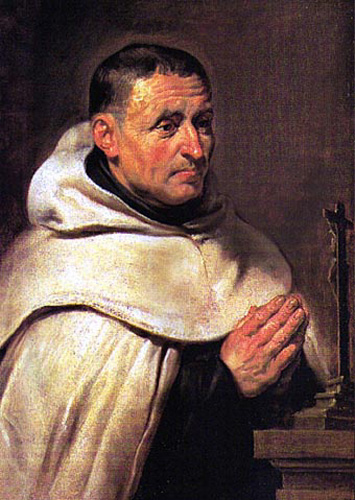
| | I senmiddelalderen kommer en ny orden af tiggermunke, karmeliterne, til landet.Det var et led i Erik af Pommerns udvikling af købstæderne, hvor de bl.a. skuller medvirke til at udbrede lærdom og undervisning.
Klosterbygningen med den tilhørende kirke, Sct.Mariækirken, i Helsingør eksisterer stadig. |
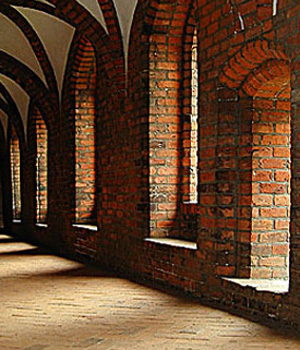
| | Erik af Pommern anlægger allerede i 1410 et karmeliterkloster i Landskrona og i 1430 påbegyndtes opførelsen af Vor Frue Kloster i Helsingør, det mest velbevarede klosteranlæg i Norden. |
Med byudviklingen i løbet af middelalderen følger også anlæggelsen af en række klostre for forskellige tiggermunkeordener. Tiggermunkene skulle tage bolig i byerne og tjene til livets ophold ved almisser og gode gerninger og i det hele taget leve enkelt og forbilledligt. Allerede i 1200-tallet kommer Franciskanerordenen og Dominikanerordenen til landet og under Erik af Pommern kommer også Karmeliterordenen til området.
Karmeliterordenen har ifølge overleveringerne sit udspring blandt eremitter, der holdt til omkring Karmelbjerget i Det hellige Land. Ordenen opnår først endelig anerkendelse som tiggerorden af pave Johannes d.12. i 1326, hvor den dog allerede er etableret rundt omkring i Vesteuropa. Karmelitermunkene var som regel veluddannede, og kongens hensigt med at understøtte ordenen har bl.a. været, at de skulle medvirke til at skabe uddannelse og lærdom i byerne. Karmelitermunkene tiltænkes også en rolle i udviklingen af Københavns Universitet, der er anlagt i 1497, og i denhen seende skænker kongen dem i 1516 et kollegium i København,
"... hvorved samme kollegium og universitet her i staden kan forøges og forbedres, således at det på alle måder kan blive nyttigt og gavnligt for deres klostres brødre og andre studenter, som kommer og studerer her iKøbenhavn"

Byklostre | 
Karmelitermunk |
Klosteret oprettes
Allerede 1410 anlægges et karmeliterkloster i den nye købstad Landskrona og omkring 1430 påbegyndes opførelsen af Vor Frue Kloster i Helsingør, i daglig tale: Karmeliterklosteret, hvor Erik af Pommern skænker en grund og paven i 1431 giver sit samtykke. I 1450 udsættes klosteret for brand, men genopbygges, så det er i funktion igen omkring år 1500. Det smukke senmiddelalderlige klosteranlæg, der står endnu, er det bedst bevarede klosteranlæg i Norden.
Kongemagten understøtter udviklingen, men klostrene i byen kan i lighed med landklostrene også beriges ved sjælegaver. Jens Truelsön skænker f.eks. i 1469 Vor Frue Kloster en sådan sjælegave.
Poul Laxmands gaver
Tilkøb af sjælemesser er en slags afladshandel, men også en gensidig forpligtende forretning, således som det fremgår af en brevveksling vedrørende Povl Laxmand, der var lensmand på Krogen, eller "høvedsmand på Krogen på rigets vegne", som det hedder i en skrivelse fra 1482. I brevet opregner den øverstbefalende for Jomfru Maria Ordens Kloster i Danmark, Niels Christiernssøn, og den lokale prior, broder Godekær, hvad Povl Laxmand får for sin pengegave.
Hundrede lybske mark er det beløb, som Poul Laxmand har skænket til klosteret til gengæld for den pågældende tjenesteydelse. Det bliver tilsyneladende til en årlig donation, idet det i et brev fra 1493, altså 10 år senere siges, at Poul Laxmand har skænket:
"...ni 100 hundrede lybske mark danske penninge, for hvilke penge vort klosters kirke og omgang blev opbygget med flere gode folks hjælp".
Rigshofmesteren Poul Laxmand
Poul Laxmand er i slutningen af 1400 tallet,næst efter kongen, rigets største jordejer, som råder over indtægterne fra omkring 700 bøndergårde og endvidere besidder rigets højeste embede som rigshofmester, bindeleddet imellem kongen og rigsrådet. I 1497 myrdes Poul Laxmand under mystiske omstændigheder på åben gade i København og kong Hans konfiskerede hans ejendomme, idet han hævdede at Laxmand havde begået forræderi.
Poul Laxmand begraves i Vor frue Kirke i Helsingør og Laxmand-familiens våbenskjold figurer flere steder i klosteret, hvor det også lægger navn til kapitelsalen, den såkaldte Laxmandsal. I korbuen over højalteret ses Poul Laxmands familievåben på fædrene side svanen med guldring i næbbet og modsat Brahefamiliens slægtsvåben på mødrene side. Våbnene flankerer den korsfæstede Kristus og efterlader ingen tvivl om, hvem der har sat sit præg på kirken.

Poul Laxmands |
Poul Helgesen
Karmelitermunken Poul Helgesen, født i Varberg i Halland, er i 1517 knyttet til klosteret i Helsingør og bliver i 1519 rektor for kollegiet i København, underviser ved universitetet og er i perioden 1522-1534 provinsialleder for karmeliterne i Norden, provinsen Dacia kaldet. Poul Helgesen blev i tiden op til reformationen i 1536 den katolske kirkes bannerfører, men var samtidig tilhænger af en reformering af kirken og kristendommen. Han var i så henseende under stærk påvirkning af humanisten Erasmus af Rotterdam og en afhandling fra 1528 om årsagerne til fattigdom giver en smagsprøve på den forbavsende humanisme, der præger hans indstilling.
Reformationens følger
Poul Helgesen forsvinder ud af billedet før reformationen i 1536, men hans Skibbykrønike der blev fundet i 1650, er det vigtigste historiske værk fra reformationstiden. Klosteret i Helsingør ophører med at eksistere efter reformationen, idet det i 1541 er forvandlet til hospital for syge og fattige. I Helsingør tyder det på, at tidligere munke er endt som tiende- og almisseopkrævere for hospitalet, et hverv som de unægtelig havde forudsætninger for at bestride.
Der er her tilsyneladende tale om en blid overgang, hvor de gamle munke får lov til at forblive på stedet til deres død, eller på en eller anden måde tilpasser sig de nye omstændigheder. En skrivelse fra 1560 med tilknytning til Helsingør beretter nærmere, hvordan man tog på sagerne:
"Anders Ibsen, fordum abbed i Æbelholt, indgiver sig i Helsingør Hospital med alt sit gods, deriblandt også Blidstrup, Helsinge, Vejby og Kregme kongetiender, som han har i forlening i sin livstid efter Christian d.III.s brev."

Skibby Krøniken |
Arkitektur
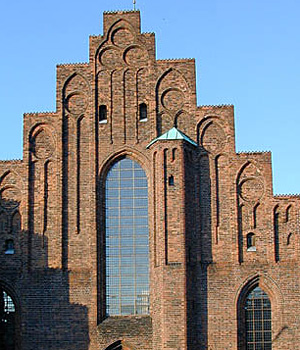
| | Vor Frue Klostret i Helsingør er opført i anden halvdel af 1400-tallet. Klosteret er meget velbevaret og dermed enestående i Nordeuropa. Det er et godt eksempel på baltisk gotik og et højdepunkt i øresundsgotikken stilistiske variationer. |
Vor Frue Kloster i Helsingør er en, for nordeuropæiske forhold, et usædvanligt vebevaret klosterkompleks med tilhørende kirke, Sct. Maria Kirken også kaldet Vor Frue Kirke.

Klosterkomplekset |
Grundplanen
Det velbevarede Karmeliterkloster er enestående i Nordeuropa, opført i den sengotiske periode i slutningen af 1400-tallet. Komplekset er traditionelt opbygget, med sin sluttede, nærmest kvadratiske grundplan, der lukker af mod omverdenen. Fløjene er funktions- opdelte, hvor økonomiafdelingen med madlavning m.m. foregår i nordfløjen, modsat klosterkirken, der vender mod syd. Indadtil slutter klosteret med en overdækket omgang, fratergangen, der vender ud imod en åben gård.
Grundplanen stammer oprindelig fra Sydeuropa, men byggematerialet er de brændte teglsten, der er kendetegnende for den nordeuropæiske, eller baltiske gotik. En række detaljer bl.a. det treskibede kirkerum med et fælles tag som overdækning, tyder på påvirkning fra de vendiske hansestæder. Gotiske spidsbuer ses anvendt overalt i døre, vinduer, gavlender og i forbindelse med fratergangen.

Grundplan | 
Vestfløjen | 
Karmeliterklosteret | 
Klostergården | 
Fratergangen |
Den gotiske stil
Kirkens gavlender er en sand opvisning i murstensgotikkens bygningskunst og ornamentale virkemidler, som berettiger til at man taler om en speciel Øresundsgotik med disse kendetegn. Østgavlen, der ligesom vestgavlen har kamtakkede gavlender, er stramt symmetrisk komponeret med fire vertikale blændingsfurer på hver side af det 11 meter høje midtervindue. Over dette og hver af sidevinduerne er bredere blændinger med varierede, cirkulære, pæreformede og spidsbuede mønstre og nedhængende stavværk.
I vestgavlen slutter blændingerne ved en fælles horisontal linie ovenoverd e 2 sidevinduer. I denne ende er anvendt brede blændinger med samme ornamentale virkemidler som på østgavlen, men symmetrien brydes på overraskende vis af det lille klokketårn på højre side af indgangsdøren.

Vestgavlen | 
Vestgavlen | 
Vestgavlen | 
Østgavlen | 
Vestgavlen |
Kapitelsalen
I klosterets indre rum findes en overdådig variation i gotiske hvælv og søjler. Det enkle krydshvælv er det fremherskende, f.eks. i kirke og fratergang, mens Kapitelsalen, eller Laxmandssalen har raffinerede nethvælv med indfældede symboler og våbenskjold.
Ornamentale figurer i hjørnerne minder de fornemme karmelitermunke om den jordiske tilværelses fristelser og forgængelighed. Formodentlig er ophavsmanden til disse figurer og det øvrige sandstensarbejde billedhuggeren og arkitekten Adam van Düren, der også forestår opførelsen af den senmiddelalderlige borg Glimmingehus på Østerlen i Skåne og siden hen restaureringen af Lund Domkirke.

Laxmandsalen | 
Memento Mori | 
Madonnafigur |
Gryende renæssance
Adam van Düren varsler en anden tidsalder. Karmeliterklosteret er et traditionelt middelalderligt bygningsværk, men mange træk ved udsmykningen peger hen imod den gryende renæssance.
Ikke kun klosteret peger på en ny tid. Skråt overfor klosterkirkens indgang ligger en stenbygning, der oprindelig har tilknytning til klosterets virksomhed. Ved bevæge sig rundt om bygningen kommer man så at sige fra middelalderen og ind i renæssancen. På den vestlige gavlende der vender ud imod Sct. Annægade, og repræsenterer en senere tilbygning, ses de for renæssancen karakteristiske vandrette profilbånd. Nordgavlen længere henne, ud imod klosterkomplekset, er smykket med de for renæssancen karakteristiske svungne, eller såkaldt vælske gavlender. Et typisk stiltræk fra renæssancen som genfindes på både herregårde og kongeslotte i den efterfølgende tid.

Karmeliterhusets vestgavl | 
Karmeliterhusets nordlige gavl |
Kalkmalerier
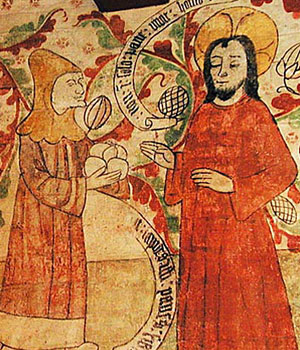
| | Kalkmalerierne findes i mange variationer i Vor Frue Kloster og klosterkirken, Sct. Mariæ Kirke. En del af billederne beretter om en brydningstid, hvor den sengotiske middelalder glider over i renæssancens nye virkelighedsopfattelse.
|
Mariamotivet
Både Karmeliterklosteret og kirken er som navnene, Vor Frue Kloster og Skt. Marie Kirke, antyder viet til Jesu moder, Jomfru Maria. Mariadyrkelsen udvikler sig allerede fra tidlig middelalder i tæt tilknytning til klosterbevægelsen og denne tendens fortsættes. I senmiddelalderen bliver et fremherskende motiv den såkaldte apokalyptiske(dommedags) Madonna, eller Maria i Stråleglans, et motiv der hidrører fra Johannes´ Åbenbaring Kap.12.13.
I klosterkirken er det småt med henvisninger til mariadyrkelsen. Bebudelsesmotivet med ærkeenglen Gabriel findes gengivet i umiddelbar nærhed af indgangsdøren, og endnu er bebudelsesmotiv med den læsende madonna findes på vestvæggen ved siden af orglet. Motivet Maria i Stråleglans, også kaldet solgidsel, findes gengivet henholdsvis på et kalkmaleri på spisesalens endevæg og i fornem medaljon i hvælvet i klosterets kapitelsal.

Bebudelse | 
Læsende Maria | 
Maria i stråleglans |
Lazarussalen
Klosterets spisesal, refektorium, i nordfløjen kaldes også Lazarussalen efter en frise af kalkmalerier på væggen ved indgangsdøren, der gengiver scener fra Lazarus-lignelsen om den rige og den fattige mand.
Væggen er plan i hele sin længde, og rummer på venstre side af indgangsdøren to enkeltstående billeder, der viser henholdsvis Jesus og Samaritanerinden og Jesu fristelse i Ørkenen. På et skriftbånd, eller om man vil en talebobbel, imellem Jesus og Samaritanerinden, står der på latin "giv mig noget at drikke", måske underforstået at Jesu ord er vigtigere end mad og drikke.
Det er da også dette tema der angives i det næste billede, hvor djævelen frister Jesus med at omskabe stene til brød, hvis han er Guds søn. Jesus svarer, som angivet på skriftbåndet, at mennesket ikke lever af brød alene. Emnerne i disse to lignelser er således velvalgte til munkenes spisesal, som en påmindelse om den rette, gudelige beskæftigelse, men samtidig er det dog også en bekræftelse af de fornemme karmalitermunkes åndelige arbejde. I øvrigt var der samtaleforbud under spisningen.

Djævlen frister Jesus |
Lazarusfrisen
Selve Lazarusfrisen gengives meget usædvanligt i en serie af 6 billeder, hvor dele af grundteksten fra Lukasevangeliet gengives i et bånd, der løber ovenover billederne og hvor der på billede to og tre også findes korte tekstbånd, en slags tegneserie.
Billede 1 anvender en grad af dybdeperspektiv i fremstillingen. Man fornemmer tydeligt, at der tale om en gengivelse af et samlet rum med forgrund og baggrund, selvom størrelsesforholdene i gengivelsen af personerne ikke er korrekt. De forreste personer er altså ikke børn, men gjort mindre af hensyn til udsynet.

Den rige mand og Lazarus | 
Den rige mand | 
Lazarus | 
Den riges død | 
Lazarus død |
Bordscenen
Billedet viser den rige mand til højbords og giver et usædvanligt indblik i skik og brug omkring år 1500. De butnæsede sko er højeste mode netop på det tidspunkt og snittet i klædedragten peger på italiensk mode i tidsrummet 1450-70. Det har da også været foreslået at kunstneren er italiener, måske en klosterbroder der har været tilkaldt til at udføre denne opgave?
Man bemærker også detaljer omkring datidens bordskik: de flade trætallerkener, eller måske brødskiver anvendt som tallerkener og de mindre brød, som man har brugt til at søbe maden op med. En kniv kunne vel tages i anvendelse, men gaflen er endnu ikke opfundet.
Selve scenen med den rige mand er blevet udlagt forskelligt. Han er utvivlsomt en modelaps, men hvem er det egentlig han sidder til bords med? To kvinder, men er den ene hans kone, så burde det være hende til venstre hånd og hvorfor holder han så den anden i hånden? Der kan nok ikke gives noget endeligt svar herpå, men antydningen af de kødelige fristelser er der vel. Den lidt primitive perspektivisk gengivelse peger på, at man er ved at bevæge sig ud af middelalderen og ind i renæssancens tidsalder.
Rig og fattig
Den perspektiviske fremstilling iagttages ligeledes i det efterfølgende, andet billede i frisen, hvor Lazarus ligger udenfor den rige mands dør og vånder sig. En tjener tilkaster Lazarus smuler fra den rige mands bord, mens en anden med hånden for underansigtet vægrer sig mod stanken fra de væskende sår.
På billede tre skildres den rige mands død. Billedet illustrerer med al tydelighed, hvor vanskeligt det er for den rige mand at komme i himmerig. Han ligger i sin gode seng omgivet af bekendte, men også djævle, der forsøger at bemægtige sig hans sjæl. Den fattige Lazarus derimod får på billede 4 næsten automatisk adgang til himmerige.
Det femte og sjette billede i serien er ligesom billede tre og fire placeret ovenover hinanden, men er dårligt bevarede. De fremstiller formodentlig øverst den fattige mand hvilende i Abrahams skød og nederst den rige mand i helvede.
Fortolkning af frisen
Eftertiden har været tilbøjelig til at udlægge frisen som konstant påmindelse til de fornemme karmelitermunke om mådehold og barmhjertighedsgerninger. Det er frisen også, men samtidig er det igen også en underfundig bekræftelse af munkenes egne gøremål. De humanistisk orienterede og, som i Poul Helgesens tilfælde reformkatolske og intellektuelle munke, har formodentlig ikke følt ubehag ved denne motivkreds.
Lazarus-historien findes kun gengivet i kalkmalerier netop fra den senmiddelalderlige periode omkring år 1500 og det er derfor også nærliggende at tolke motivet ind i denne sammenhæng: Vægtningen af det medmenneskelige, humanistiske gøremål, men måske også antydningen af at de gode gerninger ikke gør det alene. Det er vanskeligt for den rige at komme ind i himmerige, måske kan kun nåden frelse ham?
Kirkerummet
Kirkens sydlige sideskib er i hvælvingerne dekoreret med en omfattende samling af kalkmalerier, der fremstiller scener fra Jesu liv og levned, formodentlig påført i forbindelse med færdiggørelsen af kirken i slutningen af 1400-talet.
Ind imellem scenerne figurerer et billede af Hans Pothorst - søulk og måske Columbus foregangsmand - vedhæftet et våbenskjold, hvilket sandsynligvis betyder, at han har bekostet udførslen. Ligesom i tilfældet med Poul Laxmand træder personen frem og markerer sin sponsorvirksomhed.. Ved siden af ham findes endnu et portræt af en navngiven (Dellf) maler, -velsagtens ham der har udført frisen.

Hans Pothorst | 
Delff maler |
Musiksalen
Paradisets have findes afbildet i den såkaldte musiksal, som snarere er en nødkirke, hvorfra man gennem et hul i muren kunne overvære gudstjenesten nede ved hovedalteret. Rummet er dekoreret fra gulv til loft som en paradisisk løvhytte med musicerende engle og groteske figurer rundt omkring i løvhanget.

Harpeklang | 
Musicerende engel | 
Vrængfigur |
Grotesker
Kirkeskibet rummer endelig også er række karakteristiske, groteske masker som en del af kirkens udsmykning. Disse kan tolkes som profane dagligdags kommentarer, der står i kontrast til de fornemme karmeliters gerninger.

Vrængmaske |
Mariakirken i Helsingborg
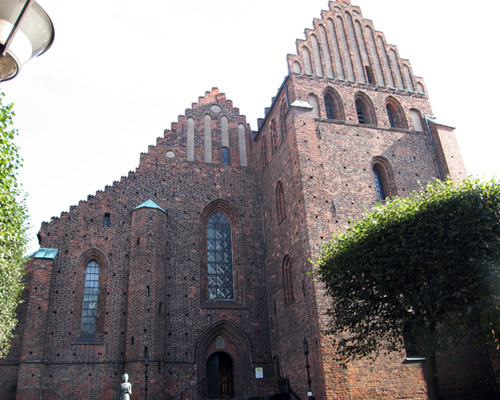
| | Sancta Maria i Helsingborg har en lang bygningshistorie. I sin grundform var den færdig i 1410. Kirken er, som sin pendanti Helsingør,opført i gotisk stil og indeholder en række kunstskatte, ikke mindst fra middelalderen |
Sancta Maria Kyrka
Den senmiddelalderlige kirke ligger midt i det gamle Helsingborg. I det 21 århundredes Helsingborg er den ikke nogen dominerende del af bybilledet og synes nærmest ikke fra søsiden. Kirken er faktisk lidt svær at opdage, men når man står foran den, må man beundre skønheden i den gennemførte gotiske byggestil.
Træder man indenfor er en række af Helsingborgs senmiddelalderlige kirkekulturs interiør bevaret.

Mariakyrkans østlige facade |
Gotik
Sancta Maria Kyrka stod færdigbygget i 1410 efter en lang byggeperiode på ca. 100 år. Den er opført som en basilika og har nærmest karakter som en lille katedral. Midtskibet er, i lighed med de store gotiske katedraler i Europa, lavt og har ingen vinduer under hvælvet. Byggestilen omtales ofte som: en halv basilika eller en ”pseudobasilika”. De samme karakteristika kan i øvrigt iagttages på den anden side af Sundet, hvor Mariakirken i Helsingør har samme arkitektoniske træk.
De gotiske træk er fremtrædende, de spidsbuede vinduer og de spidsede hvælv er endnu fremtrædende. Som man også kan se det i eksteriørets trappestensgavle og de udvendige støttepiller, som holder kirken på plads.
Kirken erstattede en tidligere romansk sandstenskirke fra 1100-tallet. Og med sine, i forhold til tidens små huse i Helsingborg, blev den med sit gotiske teglstensbyggeri et markant og dominerende bygningsværk i byen. Der var flere kirker i byen, men det var kun Kärnan og Nicolaiklosteret, der kunne konkurrere med Sancta Mariakyrkan om den bygningsmæssige dominans i Helsingborg.

Mariakyrkans vestlige facade | 
Mariakyrkans støttepiller | 
Maria Kyrkans hvælv | 
Helsingborg model 1400 |
Middelalderens kunstskatte
Døbefonten er fra 1300-tallet og er hugget ud af gotlandsk kalksten. Oprindeligt har den været malet og videnskabelige undersøgelser påviser fragmenter af rød og blå oliemaling.
Altertavlen/Skabet er i en bemærkelsesværdig god stand. Den er malet på samme tidspunkt som kirkens indvielse. Nemlig i perioden 1449-1452. Antageligt af en mester fra Stralsund. I centrum af tavlen dominerer scenen med Maria og det nyfødte Jesusbarn. Motiverne omkring dem er fra Jesus liv og virksomhed, som det beskrives i Det nye Testamente.
Altertavlen, som er udformet som en slags skab, kan lukkes sammen på visse tider af kirkeåret. Bl.a. under fasten. Her må tilskueren undvære skulpturerne og nøjes med at betragte motiver fra Jesus sidste tid. En af disse scener viser, hvorledes Jesus driver kræmmerne (købmændende) ud af templet. En interessant detalje hér er, at nogle mønters udseende i dette motiv kan stedfæstes til Stralsund. En detalje der gør, at man antager, at alterskabet er produceret af en mester i denne by.
Triumfkrucifixet i gotisk stil er fra den seneste middelalder. Nok så interessant er, at der står 1753 ved korsets fod. Men angiver kun tidspunktet for da krucifixet blev malet om /restaureret. Dette kompliceres videre af at selve korset er fra en senere tid end selv krucifixet. Krucifixets ophavsmand er ukendt, men eksperterne antager, at det er tilvirket i den sydlige del af Skandinavien.
En senere tid har fjernet det oprindelige puds, som kirkens indvendige vægge var beklædt med. Nu fremstår væggene som teglstesnvægge. Bag ved alteret er der dog endnu rester tilbage af den gamle puds, hvor der er fragmenter af de gamle kalkmalerier. Bl.a. af helgene: S:t Magnus og Brandanus. Kalkmalerierne er fra 1400-tallet blev udført af den såkaldte: Helsingborgmester, hvis noget mere velbevarede kalkmalerier kan beses i Brunnby Kyrka på Kullahalvøen.
Fra middelalderen findes også det såkaldte piscinan nederst i korets væg.

Maria Kyrkans altertavle | 
Det lukkede alterskab | 
Kræmmerna drives ud af templet | 
Maria Kyrkans krucifix | 
Maria Kyrkans døbefont |

Maria Kyrkans kalkmaleri | 
Maria Kyrkans piscina |
En ny tid på vej
Tårnet til kirken blev først færdiggjort omkring 1500. Altså ved indledningen af det århundrede, som ikke blot skulle forandre kirkens organisation og dogmatik i Norden, men også det, som en senere tid har kaldt, Middelalderen.
Maria Kyrkans middelalderlige oprindelse er dog stadigvæk særdeles markant. Og dette på trods af senere moderniseringer med prædikestol, orgel og bænkerækker. Kirken er, med rette, betegnet som et eksempel på, hvad middelalderen stadigvæk kan præsentere os for af stilfuld arkitektur, dygtige bygningsarbejdere og fantastiske kunsthåndværkere.Adelsborge
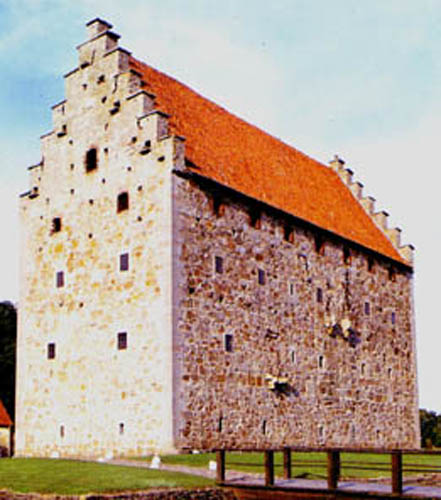
| | Glimmingehus på Østelen er opført sidst i 1400-tallet. Trods det middelalderlige udseende er Glimmingehus et byggeri i renæssancens ånd, - måske nærmest et stykke middelaldernostalgi. |
Glimmingehus
Adam van Düren er udover restaureringen af Lund Domkirke tidligere i sin karriere arkitekten bag Laxmandsalen i Vor Frue Kloster i Helsingør og opførelsen af den berømte senmiddelalderlige borg Glimmingehus på Østerlen i Skåne. Bygherren er lensmanden på Gotland og senere rigsadmiral, Jens Holgersen Ulfstand.
Borgen, der står fuldført i 1499, er dybest set utidssvarende. Den kunne nok modstå imod et lokalt bondeoprør, men ikke klare en belejring med tidens militærtekniske fornyelse, kanoner. Måske er bygningen også snarere ment som et nostalgisk mindesmærke med ridderromantik næret af renæssancemenneskets interesse for fortiden og hang til selvfremstilling, således som det kommer til udtryk i dele af interiøret, der består af relieffer med bygherren afbildet og antikviteter hentet hjem fra Gotland.

Glimmingehus | 
Glimmingehus, Skåne | 
Glimmingehus (tværsnit) | 
Jens Holgersen Ulfstand | 
Husherren knæler |
Ørup og Bollerup Stenhus
Et par andre senmiddelalderlige bygningsværker i Skåne, Ørup og Bollerup Stenhus, er ligeledes eksempler på bygningsværker på overgangen til renæssancens tidsalder. På Bollerup Stenhus ser man at den gotiske udsmykning er ren staffage. Skoldehuller er blevet til blændinger og har ingen forsvarsmæssig funktion.
Bollerup Stenhus er ikke en borg, men en pragtbolig, et palladium. Bollerup tilhørte den stenrige skånske Krognosslægt. Enken Barbara Brahe rejste i 1574 sammen med Christian d1.s dronnning Dorothea til Rom og var derfor også godt bekendt med tidens tidens tendenser. En beskrivelse af et bryllup på Bollerup Stenhus i 1502 demonstrerer adelens rigdom, som vokser yderligere i den efterfølgende tid.

Ørup | 
Bollerup, Skåne | 
Kristusportræt | 
Borgeby, Skåne | 
Billehuset |
Håndværkerlaug
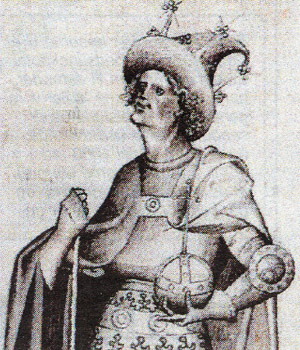
| | Håndværkslaugene har rod i den tidlige middelalders handelsgilder, der var sociale sammenslutninger for rejsende handelsfolk.
Under påvirkning fra den voksende bykultur i Nordtyskland etableres efterhånden håndværkslaug, som udover sociale funktioner også regulerere produktionen indenfor de enkelte områder.
Det er dog først i den seneste middelalder at laugene tager form og anerkendes af kongemagten. |
Håndværkerlaugene har rod i de middelalderlige gildesammenslutninger, der var sammenslutninger for rejsende købmænd, og udvikles under påvirkning fra hansestædernes bykultur. Laugsstrukturen i det gammeldanske kulturområde udvikler og etablerer sig først for alvor i løbet af 1500-tallet, nok også som følge af den generelt senere udvikling af købstadskulturen. Udviklingen i Helsingør kan tjene som eksempel herpå.
Byernes selvstyre
Gennem privilegiebreve og bistået af borgermestre og råd tilstod kongemagten byerne et vist selvstyre under lensmændenes kontrol. Herudover gav kongen gennem godkendelse af håndværklaugenes skråer, eller vedtægtsbestemmelser, disse rådighed over produktion og salg af varer og som vi skal se i det følgende, ret til selvorganisering og udbredt selvjustits.
Der er dog op igennem tiden mange konflikter omkring laugenes herredømme og fra tid til anden forbyder kongen laugenes vedtægter og selvbestemmelse. Det sker f.eks. under kong Hans (1481-1513), der forbyder skomagerlaugene, men så tillader at de genoprettes, bl.a. i Helsingør i 1510 ved et brev, der er det tidligst kendte dokument vedrørende håndværkslaugene i Helsingør.
Bagerlaugets skrå
I 1559 godkendte Frederik 2.en laugsskrå for bagerne i Helsingør, næstefter skomagernes fra 1510 den tidligst kendte fra byen. Bagerne var en vigtig og stærk samfundsgruppe i det middelalderlige bysamfund. Ligesom byen var afhængig af tilførsler af korn udefra, var det også afgørende med faste daglige forsyninger af brød, og da man på grund af brandfaren i reglen ikke bagte i private huse indtog bagerne en nøglestilling. De sørgede, om man så må sige, for det daglige brød og de måtte bøde, hvis forsyningen svigtede. Desuden var der meget udførlige bestemmelser for brødets udseende, kvalitet, vægt og i sammenhæng hermed pris.Det er de to borgermestre, 6 rådmænd og byfogeden der fremsender en skrivelse til godkendelse på vegne af 6 bagere i byen. Forslaget fylder hele 8 sider med paragraffer.

Skafferstok | 
Velkomsten | 
Laugsladen |
Specialisering
Oprindelig var laugene ikke begrænset til et enkelt håndværk, men samlede flere grupper under ét. Hans Christensen Sthen, der levede omkring 1540-1610, og var præst og rektor for latinskolen i Helsingør og siden hen fik embede i Malmø, har skrevet en komedie "Kort Vending", hvori han skildrer forskellige typer fra samtiden, og herunder kommer ind på overgangen fra den gamle håndværkertype, der bestrider mange forskellige erhverv til den nye, der holder sig til et fag.
Kort Vending, der i komedien fungerer som dommer over de forskellige typer, siger bl.a.:
Brug kun det ene embede, som du kan,
og som sig sømmer dannemand ret og sandt.
Hav Gud for øje og arbejd fri,
ved det kald, som du er ved.
Du skal få både føde og klæde,
ved det håb skal du dig glæde;"Eksterne links til Senmiddelalderen

| | Linkikonet åbner for hjemmesider, hvor der kan findes yderligere oplysninger om 1500-tallet. En del af disse tilbyder også en engelsk version eller resumé. |
|